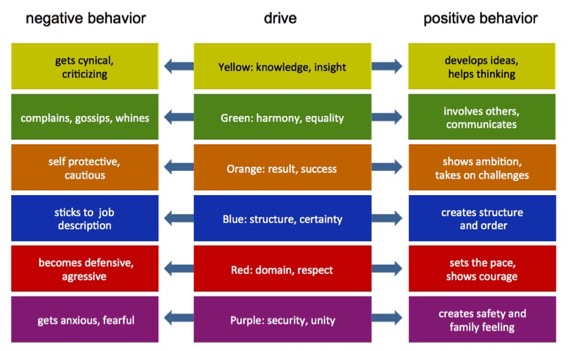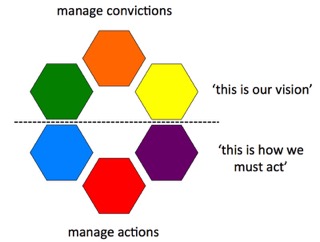An important task for managers is to motivate people. That is what it is all about; speaking to employees in a way that matches their drives. If those correspond with the manager’s drives then communication is easy. However, if they differ sharply then it is up to the manager to diminish his own drives and try to connect with the employee’s drives.
Someone who does not lead well creates a negative atmosphere in which negative behavior will manifest. It is interesting to note that every drive has its own style of negativity. In other words, based on the negative behavior of individuals and groups you can determine which drives are dominant. Someone who grouses that ‘from now on I’ll only do what’s in my job description’ reveals his Blue drive. Someone who goes in for gossiping and complaining shows a Green drive. In the figure below is shown which positive and negative behaviors are tied to which of the six drives.

What causes positive and negative behavior? The answer to that is simple: when your drives are recognized and you are given the freedom to act according to your drives, you will display positive behavior. But when your drives are not recognized and your actions are curtailed, you will, sooner or later, take a negative stance. People want to do things they are driven to do, things they see as meaningful. As Maslov stated: All humans prefer meaningful work to meaningless work.” It would behoove a manager to take that seriously.
Managers often have a clear preference: One guides by convincing and commitment and feels people should be given the freedom to make their own interpretations, whereas the other prefers to guide with concrete action and compliance. If the match between employee and manager is a good one, then matters run smoothly. A bad match creates ongoing friction, which often translates into loss of productivity. We have seen examples where the wrong matches led to a 40% loss of productivity.
Both management styles have their own weaknesses and this is something a manager should be very aware of. The intention after all is that a manager adds something to his people.

 discovering personal drives & team culture
discovering personal drives & team culture